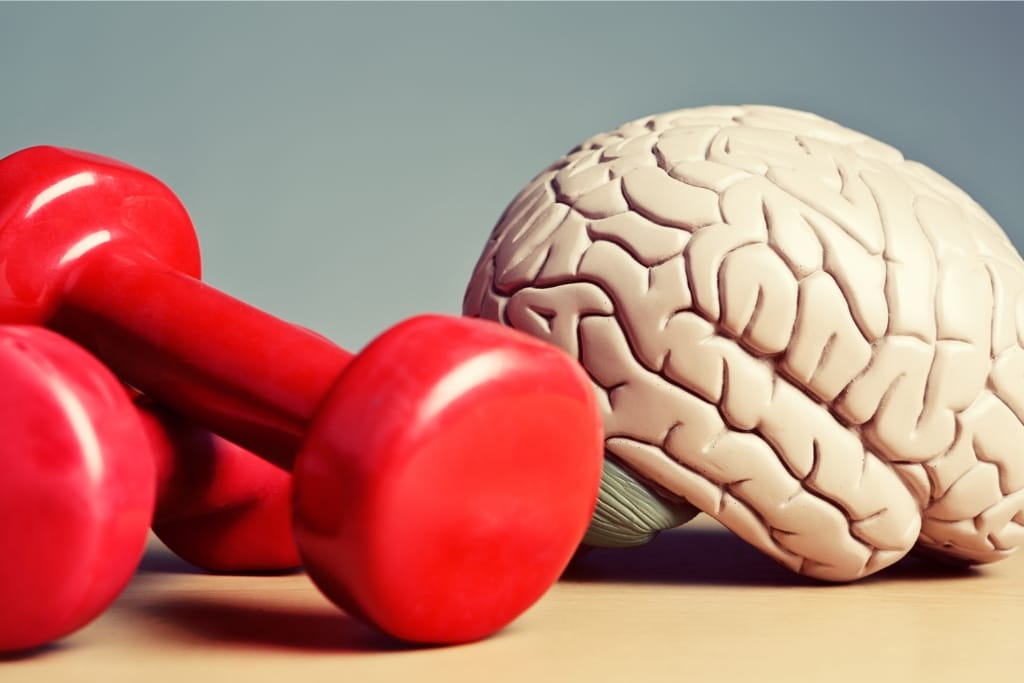Mental health is just as important as physical health, and the two are deeply connected.
Exercise and fitness play a powerful role in boosting mood, reducing stress, and improving overall psychological well-being.
Whether it’s through calming yoga sessions, invigorating runs, or strength training at the gym, building a fitness routine can profoundly impact your mental state.
Regular physical activity not only releases endorphins, the body's natural mood elevators, but it also helps reduce anxiety, promotes better sleep, and enhances self-esteem.
The best part? Small, consistent actions can lead to lasting changes.
Explore these practical and effective strategies to discover how exercise can transform your mental health today.
1)) Daily Walks
Taking a daily walk is one of the simplest yet most effective ways to improve mental health through exercise.
Walking allows you to clear your mind, lower stress levels, and enjoy a change of scenery, all while staying active.
Regular walks, especially in nature or green spaces, have been shown to reduce symptoms of depression and anxiety, providing a much-needed mental reset.
This low-impact exercise also enhances blood flow, which positively impacts brain function and mood regulation.
Whether you stroll through a park, around your neighborhood, or along a scenic trail, dedicating time to walking each day is an easy way to nurture both your body and mind.
Pro-Tip: Investing in a pair of quality walking shoes can make all the difference in your daily walks.
Proper footwear provides the support and cushioning your feet need, helping to prevent discomfort, injuries, and fatigue.
Look for walking shoes that offer good arch support, breathable material, and a comfortable fit to enhance your walking experience.
Take the next step toward healthier walks—visit your local sports store or trusted online retailer to find the perfect pair today!
2)) Yoga Sessions
Yoga is a powerful practice that combines physical movement, mindful breathing, and mental focus to enhance overall well-being.
Regular yoga sessions can significantly reduce stress and promote relaxation by activating the body's parasympathetic nervous system, which is responsible for rest and recovery.
The controlled movements and postures not only improve flexibility and strength but also increase self-awareness, helping individuals connect with their emotions and stay present in the moment.
Yoga has also been proven to alleviate symptoms of anxiety and depression, as it promotes the release of feel-good chemicals like serotonin and dopamine.
Whether practicing gentle poses or more dynamic flows, yoga provides a balanced approach to nurturing both mental and physical health.
3)) Stretching Routines
Stretching routines are a simple yet impactful way to support both physical and mental health.
By loosening tight muscles and increasing flexibility, stretching not only helps prevent physical discomfort but also promotes a sense of relaxation and calm.
Engaging in daily stretching routines improves circulation, sending more oxygen to the brain and boosting overall energy levels and focus.
Stretching is also a fantastic opportunity to practice mindfulness by focusing on each movement and the sensations throughout your body.
It gently relieves built-up tension, making you feel more at ease and centered.
Whether as part of a morning ritual or an evening wind-down, incorporating stretching into your day offers a refreshing mental recharge while keeping your body agile and resilient.
4)) Strength Training
Strength training is a highly effective method for enhancing both physical and mental health.
Lifting weights or engaging in bodyweight exercises not only builds muscle and improves bone density but also provides a substantial boost to emotional well-being.
This type of exercise encourages the release of endorphins, which reduce stress and promote feelings of happiness.
Strength training has also been shown to boost confidence and self-esteem by helping individuals set and achieve tangible fitness goals.
The focus required during a strength workout can serve as a mental escape, allowing you to shift attention away from daily worries.
Having a home gym system is a game-changer for maintaining consistency in strength training.
By eliminating the need to travel to a fitness center, a home gym makes workouts more accessible and convenient, fitting seamlessly into even the busiest schedules.
With equipment readily available, it becomes easier to stay motivated and commit to regular sessions without logistical barriers.
A personalized space allows for a comfortable and distraction-free environment, fostering focus and dedication to achieving fitness goals.
Whether it’s a set of dumbbells, resistance bands, or a multifunctional gym setup, investing in home equipment creates a reliable and flexible foundation for a consistent strength training routine that drives long-term progress.
Done consistently, strength training fosters resilience and a sense of accomplishment, which carries over into other areas of life, making it a valuable tool for improving overall mental wellness.
5)) Cycling Outdoors
Cycling outdoors is an invigorating activity that combines physical exertion with the therapeutic effects of being in nature.
Pedaling along scenic routes, whether through a city, countryside or alongside waterfronts, provides an opportunity to engage with your surroundings and breathe in fresh air while staying active.
This form of aerobic exercise effectively reduces stress and anxiety by releasing endorphins and lowering cortisol levels.
Cycling also promotes cardiovascular health, which can positively influence brain function and emotional stability.
The rhythmic motion of cycling has a meditative quality, offering mental clarity and a sense of freedom as you focus on the road ahead.
Exploring new trails or routes can add a sense of adventure to your routine, keeping the experience fresh and rewarding.
Including cycling in your lifestyle is an excellent way to enhance mental health while enjoying the benefits of movement in the great outdoors.
6)) Swimming And Water Exercises
Swimming and water exercises are exceptional for improving both physical and mental well-being.
The water's natural buoyancy minimizes the impact on joints, making it an ideal activity for people of all fitness levels, including those with physical limitations.
Moving through water provides a full-body workout, enhancing muscle tone, cardiovascular health, and flexibility.
On a mental level, the rhythmic motion of swimming and the soothing sensation of water have a calming effect, reducing stress and anxiety.
Immersing yourself in water also helps to lower cortisol levels and boost endorphins, promoting feelings of relaxation and happiness.
Swimming often requires focused breathing, which is a powerful form of mindfulness that can help clear the mind and alleviate mental tension.
Whether taking laps in a pool or enjoying water aerobics, swimming, and water exercises offer a refreshing way to enhance mental clarity, resilience, and overall health.
7)) Aerobic Exercise
Aerobic exercise is a powerful way to boost overall physical health while enhancing mental well-being.
Activities such as running, dancing, or brisk walking elevate your heart rate, improving cardiovascular fitness and lung capacity.
Regular aerobic exercise increases blood flow, delivering more oxygen and nutrients to the brain, which enhances cognitive function and focus.
On a mental level, aerobic activity triggers the release of endorphins and serotonin, mood-enhancing chemicals that help reduce stress, anxiety, and depression.
The repetitive, rhythmic nature of many aerobic exercises also provides a meditative effect, creating a sense of mental clarity and calm.
Furthermore, engaging in such activities can improve sleep quality and energy levels, contributing to a more balanced and resilient outlook on life.
Whether performed alone or in a group setting, aerobic exercise is a versatile and impactful way to nurture both the body and mind.
8)) Meditation With Movement
Meditation with movement is a deeply enriching practice that harmonizes the body and mind, blending mindfulness with physical activity.
Practices like yoga, tai chi, and guided walking meditation enable participants to cultivate awareness and presence while engaging in gentle, deliberate movements.
This dual approach enhances mental clarity and encourages a deeper connection with the body, allowing individuals to release physical tension and emotional stress.
The focused breathing often integrated into such practices amplifies their calming effects, helping to stabilize mood and reduce anxiety.
Movement-based meditation also fosters balance, flexibility, and strength, making it a holistic exercise for overall wellness.
Furthermore, it offers a unique pathway to mindfulness, especially for those who find traditional seated meditation challenging, as the flow of movement keeps the mind engaged.
By incorporating meditation with movement into your routine, you can experience a profound sense of relaxation and rejuvenation that nurtures both the mental and the physical self.
9)) Dance Workouts
Dance workouts are an exciting and dynamic way to promote both physical and mental wellness.
Combining rhythmic movement with enjoyable music, dance workouts transform exercise into a joyous and energizing experience.
They improve cardiovascular health, enhance coordination, and build muscular endurance while keeping the body in motion.
On a mental level, dancing stimulates the release of endorphins, providing a boost in mood and reducing stress levels.
The creative expression involved in dancing allows individuals to explore their emotions, fostering self-confidence and emotional release.
Learning and following choreography can sharpen memory and cognitive skills, offering a mental challenge that keeps the brain active.
Dance workouts can be adapted for all fitness levels, making them an inclusive option that encourages movement in a fun, engaging way.
Whether in a group class, at home watching videos, or even spontaneously, dancing provides a powerful outlet for energy and creativity that enhances overall well-being.
10)) Group Fitness Classes
Group fitness classes are a fantastic way to combine exercise with social interaction, creating an environment that motivates and inspires participants.
These classes come in a variety of formats, ranging from high-intensity interval training (HIIT) and spin classes to yoga and Pilates, catering to diverse fitness goals and preferences.
Working out in a group setting fosters a sense of camaraderie and accountability, which can encourage individuals to push themselves further than when exercising alone.
The presence of an experienced instructor ensures proper guidance, helping participants achieve their goals safely and effectively.
Beyond physical health benefits like improved strength, coordination, and endurance, group fitness classes also contribute significantly to mental well-being.
The social connections formed in such settings offer emotional support and a sense of belonging, which can alleviate feelings of loneliness or stress.
With music, teamwork, and a shared sense of achievement, group fitness classes create an engaging and uplifting atmosphere that inspires personal growth and a stronger commitment to health.
Conclusion
Prioritizing physical and mental well-being through various fitness and mindfulness practices can lead to a more fulfilling and balanced life.
Whether it's engaging in aerobic exercise, exploring dance workouts, or finding peace through meditation with movement, each activity offers unique benefits that nourish both the body and the mind.
Including group fitness classes or other social forms of exercise adds an invaluable layer of connection and support, fostering motivation and a sense of community.
These practices not only improve physical strength and endurance but also enhance mental clarity, reduce stress, and elevate mood.
By integrating these wellness rituals into daily life, individuals can create sustainable habits that promote resilience, happiness, and overall vitality.
Investing in your well-being is more than just a commitment to health—it’s a pathway to living with purpose, energy, and joy.
Download Our Free E-book!








